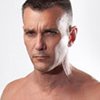Working out and lifting weights have been huge parts of my life for pretty much forever, so I've had my fair share of aches and pains. One of my first major twinges first popped up about 15 years ago, back in the "How much do ya bench?" days. It was—this won't surprise many of you—in my shoulder.
The shoulder joint is the most mobile joint in the body, but that doesn't mean weightlifters have particularly mobile or healthy shoulders. On the contrary, this crucial joint is highly prone to injury. I attribute most of the damage to my practice of including heavy behind-the-head military presses in my program.
However, deep weighted dips and my beloved barbell bench didn't help my shoulders either. At one point, the pain was so bad I had to shampoo my head with just my left hand. I figured it was just part of the price I paid for the training I loved.
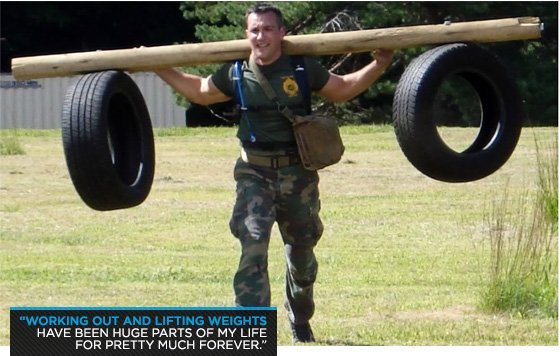
If only it stopped with the shoulder. I don't consider myself a runner, but I do include some of it in my training. I try to keep it interesting with trail runs or sprint-walks. But a couple of years, ago I started getting severe cramps in my left calf. The pain was bad enough that I had to stop running. I tried some acupuncture treatments and the cramps went away—momentarily. Not long after that, anytime I ran or got on a piece or cardio equipment I could feel my calf knot up again. I adjusted my workouts and decided I had to, once again, live with the pain.
Does any of this sound familiar? You've no doubt adjusted your workouts in the past to avoid a movement that had begun to feel painful or scary. Maybe you tried to stretch it away or grimaced while a masseuse crammed her elbow in your socket—all to no avail.
There must be a better way, right? I've come to believe that there is. It's called Active Release Technique, or ART.
Before you think I'm hawking some off-the-wall miracle cure, listen up. When it came to my shoulder, I gave the status quo its opportunity—and then some.
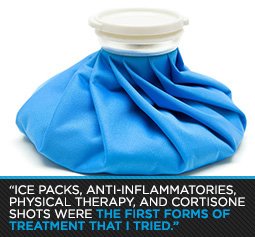
First, I went the normal route of treatments that included anti-inflammatories, ice packs, physical therapy, and cortisone shots. I had deep tissue massages, and while they seemed to help, they never seemed to go far enough, and the benefits never lasted.
Eventually I didn't have the time or patience for more therapy, so it finally came down to surgery for "shoulder impingement syndrome." After this procedure, more cortisone shots, and more rounds of the previous treatments, I was back to heavy benching. Now at least I was smart enough to drop the behind-the-head militaries.
My shoulder was good enough to carry me through about 10 bench press contests in the following three years. Yet it was never quite right. My symptoms were starting to come back yet again. So when I was surfing around on the website of the noted strength coach Charles Poliquin and saw an article with the headline "Pain-Free Bench Pressing," you'd better believe I was going to read it. I wasn't looking to set new PRs; I just wanted to train without pain.
In the piece, Poliquin talks about how the great Serbian bodybuilder Milos Sarcev was scheduled for surgery on both shoulders for impingement syndrome. But after just one ART treatment, Sarcev was almost cured and he cancelled his surgery. This was hard to believe, but coming from a trainer of Poliquin's stature, I was willing to give him the benefit of the doubt. I'd have gladly settled for just half of Sarcev's purported results.
It had to be worth a shot. So I searched the ART website to find someone certified in my area and set up an appointment with Dr. Ken Lowey of Newton Center Chiropractic.
ART is basically a super-deep tissue massage performed by a highly skilled, certified practitioner. It's based on the theory that, over time, scar tissue forms within muscles, fascia, and connective tissue due to overuse. These adhesions trap nerves, causing pain, weakness, and lack of mobility.
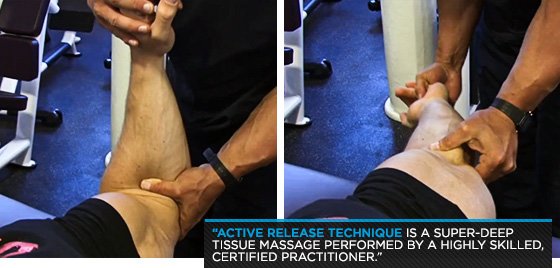
If you've ever had a truly deep massage, this logic probably makes sense to you in principle. Your muscles get shorter, weaker, and more sensitive, the more they're getting crowded by extraneous tissue and other crap. Acute injuries only make this situation worse. It's easy to think that when we're injured, we're injured for life. But ART practitioners are saying that with a little help, we can heal better, and more completely.
Unlike some equipment-heavy techniques like Graston, an ART provider uses nothing but their hands and know-how to locate scar tissue and manually break it up. Watch videos like the one below of Poliquin (who is a certified ART provider) performing ART on IFBB pro Ben Pakulski, and it looks like he just fishes around randomly in the muscle until he's hurting his patient. But according to the ART site, practitioners have to master over 500 different movements in order to get certified.
Coach Poliquin Using ART to Maximize Muscle Growth
Watch The Video - 07:38
On my first visit, I gave Dr. Lowey a summary of my injuries, focusing primarily on my right shoulder and left calf. He began searching my shoulder with his fingertips, and it didn't take him long to find the most painful spot.
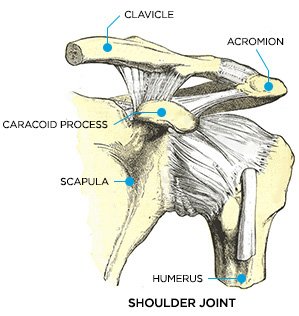
For the next several minutes, he manipulated my arm while his fingers and thumb dug deep into the front of my shoulder. It was agonizing—I'd say about an 8 on a 10-point scale.
Then he began working on my calf, which for many people is the single most sensitive muscle group. He quipped that the scar tissue felt like a thick cable as he pressed deep along the length of this cable with his thumb.
He repeatedly inched his way toward my knee as if he was trying to press all the toothpaste out of a tube.
As for me, the pain just kept increasing until it topped off at a full 10. I was clenching my teeth so hard I'm surprised my molars didn't explode. I thought about tapping out, but I didn't want the loss on my record. I remembered reading that this treatment "could be painful" and I wasn't disappointed.
After one of the most grueling hours of my life, he finally said that was all he could do on the first session. I wasn't going to argue. He recommended I work out as usual and come back in a week.
For the next several days, my shoulder and calf were sore to the touch. However, I was surprised to see that there wasn't any bruising. I bench pressed a couple of days after the session and I had very little pain—definitely less than I was feeling before the session. It wasn't pain-free, but my shoulder didn't feel as tight.
At my next treatment a week later, Dr. Lowey started off by working on my left calf again. Amazingly, it was almost painless. He said he got most of the scarring on the first session and there was very little left to break up. He also located and broke up a little scarring in my right calf. This time, I felt it.
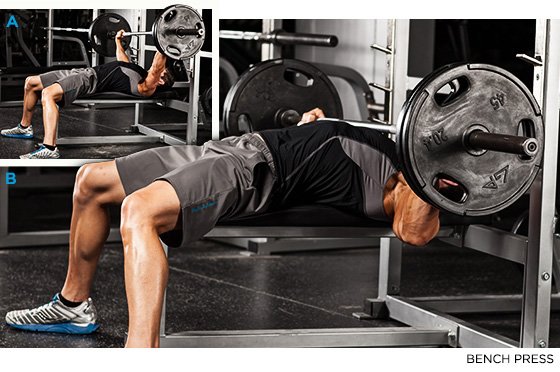
He worked on both shoulders, and while still painful, it wasn't nearly as bad as the first session. After another week and several workouts, my calf felt completely healed and pain free. The pain in my shoulder is less than half of what it was prior to treatment. I plan on going back for more treatments on both shoulders.
Had I not found this new treatment, I'm sure I would continue to tailor my workouts around my nagging injuries. The fact that the pain in my calf has disappeared after two sessions is amazing. Maybe after a few more treatments I'll know what it feels like to work out with pain-free shoulders and chest. I'm not sure I remember!
If your journey has been like mine, I recommend you consider ART along with the old traditional methods of treatment for nagging muscle and joint pain. Just try to get through the first session without giving up all your darkest family secrets and the PIN to your debit card.
